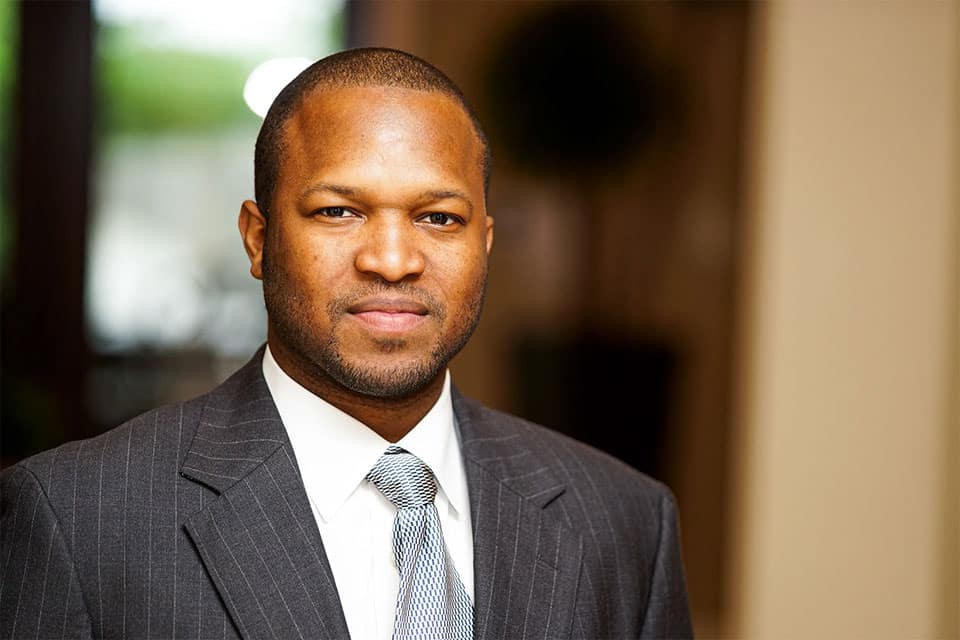3 Ways to Share Your Unique Career Journey With the Next Generation of Leaders

If you’ve climbed to the top of the leadership ladder, you’re in a position to throw others a line to join you. So, share your hard-won knowledge with your peers and younger generations entering the workforce to encourage innovative thinking and growth. Try these three tips to transfer your knowledge effectively.
You wouldn’t be a leader if you didn’t have a few stories about the bumps and bruises you gathered along the way. These stories don’t just make up your career journey. They can become springboards to help you engage, inspire, and maybe even entertain the next generation of CEOs and entrepreneurs.
Too often, leaders forget to pass along what they know. Or they do it sparingly as if their thought leadership is something to be frugally handed out. The result is that they miss great opportunities to leverage their unique experiences in ways that can help their brands and the stakeholders around them.
Imagine two corporate founders. One puts up a wall when it comes to their knowledge and shares their insights infrequently with a few top-level peers. The other readily recommends best practices and openly discusses their most embarrassing flops with all employees. Which leader do you suppose would engender team loyalty and build a trusting culture?
Of course, the point isn’t for you to talk about yourself incessantly. It’s for you to set aside time to find ways to make use of your formal and informal education. Great leaders aren’t afraid that spreading their expertise will weaken their positions. They know it’s a key to helping younger workers speed up the learning curve and bring fresh, innovative thinking to the company.
Knowledge Sharing: Hidden Advantages for CEOs
I’ve been a long-time believer that knowledge sharing is essential. What I didn’t suspect at first was how beneficial it could be to my organization and me.
For instance, each year, I meet with science and engineering students at my alma mater, North Carolina A&T. I’m passionate about teaching what I know to young minds, and I learn quite a bit in the process. It’s a two-way street. I tell them what I know, and they tell me what they know — including what they see for the future.
It’s incredibly exciting to bring back their enthusiasm and vision to my team. It gives me a better understanding of how to engage younger workers and tap into their natural energy. This allows me to become a more confident CEO who’s comfortable in a wide variety of situations.
Want to transfer your knowledge effectively? Try these three suggestions. They’ve worked well for my organization and me.
- Launch a mentorship program.
The good news is that mentoring is probably happening in your company in some way or another. Nevertheless, you need to formalize the process with a full-blown, company-backed mentorship program to get the most out of it.Taking a programmatic approach to mentoring ensures that it’s a constant occurrence year after year. A good way to begin is to find your company’s knowledge and skills gaps. In other words, what could your employees benefit from learning about? After identifying those gaps, you can start pairing junior employees with more seasoned employees as mentors.
Over time, you’ll start to close your gaps. You’ll also foster stronger bonds throughout your company, no matter what your organizational chart looks like. Remember to consider mentorship as a step in your succession planning as well.
- Contact your alma mater.
Educational institutions tend to be welcoming of guest speakers who are successful alums. To make the most of your knowledge sharing, get in touch with former professors or department administrators. Explain that you’d like to talk with their students and perhaps mentor them.Students — including those in their senior years of college — are often unsure about what they want to do career-wise. I’ve found that they like hearing about my journey, my missteps along the way, and my path to leadership. Because I also graduated from their school of engineering, they can trust my ideas and experiences.
As a side benefit, you might find interns from your presentations or one-on-one discussions. Though that shouldn’t be your aim, it can be great for bringing creativity to your organization. Also, make use of social media to stay in touch with any students who want to continue the discussion beyond the classroom.
- Write a book.
Don’t get overwhelmed by this strategy. Writing a book isn’t as hard as you might imagine and can allow you to leave a documented legacy. I’ve become a published author. The key for me was treating the experience as a planned project rather than something that would just “happen” thanks to inspiration.First, write down all the information on the topic you want to share. If you’re faced with writer’s block, come up with questions you often hear about your role or the main idea you want to write about. Then, answer those questions. Be as expansive with your answers as you like. You won’t use everything, but that’s OK. Having more information is better than not enough.
Next, work out the structure of your book. You might want to partner with another person or an agency to help flesh everything out. Use your best judgment. The goal is to bring your thoughts to life so you can share them in the most efficient way possible: the written word.
Being a leader humbles you, especially when you take time to think about how far you’ve come amid distractions, downturns, and competition. If you’ve climbed to the top, you’re in a position to throw others a line to join you. That’s a remarkable position to be in — and one you don’t want to take for granted.
Written by Vince Dawkins.
Have you read?
These are the countries with the Highest Average Salaries, 2022.
International Financial Centers Ranking, 2022.
Hygiene-driven efficiency: a value-driving benefit for businesses by Dr. Lisa Ackerley.
Trading In Traditional CEO Thinking For Holistic Leadership by Laura Gerrits.
CEO Spotlight: HR Trailblazer and Founder of Fulcrum HR Consulting Kelly Kubicek Shares Her Secrets to Empathetic Leadership.
Why leaders should be data-informed, not data-driven by Dr. Selena Fisk.
Stock Rights That Protect the Value of Your Executive Equity Compensation by Robert A. Adelson, Esq.
Bring the best of the CEOWORLD magazine's global journalism to audiences in the United States and around the world. - Add CEOWORLD magazine to your Google News feed.
Follow CEOWORLD magazine headlines on: Google News, LinkedIn, Twitter, and Facebook.
Copyright 2025 The CEOWORLD magazine. All rights reserved. This material (and any extract from it) must not be copied, redistributed or placed on any website, without CEOWORLD magazine' prior written consent. For media queries, please contact: info@ceoworld.biz








